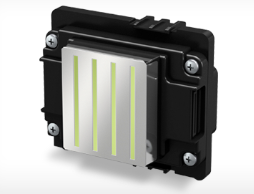
How does the performance of printheads affect printing results?
I. In terms of printing precision
Resolution
The resolution of a printhead refers to the number of ink dots that the printhead can eject per unit length. A printhead with high resolution can eject more ink dots per inch (dpi). For example, a printhead with a high resolution of 1440 dpi or even higher can present finer details when printing images or text. When printing high - quality photos or fine - detailed drawings, a high - resolution printhead can make the edges of images smoother, lines clearer, and tiny elements such as human hair strands and leaf veins be printed precisely.
Ink - dot positioning accuracy
The positioning accuracy of ink - dot ejection by a printhead determines whether the ink dots can land accurately at the predetermined positions. If the positioning accuracy of the printhead is poor, the ink dots may shift, resulting in blurred or ghosted printed patterns. For example, when printing barcodes or QR codes, precise ink - dot positioning is required; otherwise, scanning may fail. A high - precision printhead can ensure that each ink dot lands accurately at its proper position, thus guaranteeing the clarity and accuracy of the printed pattern.
II. In terms of color performance
Color accuracy
Printheads have an important influence on color accuracy. The number and arrangement of nozzles of a printhead affect the mixing effect of different - colored inks. For example, some printheads adopt a multi - color - channel design and mix accurate colors by precisely controlling the ejection volumes and positions of different - colored inks. If the printhead performance is poor, the color mixing may be uneven, and the original colors of the image may not be accurately reproduced. This effect is more noticeable when printing advertising posters, artworks, and other contents with high requirements for color accuracy.
Color - transition effect
A well - performing printhead can achieve natural and smooth color transitions. When printing images with gradient colors, such as a sunset sky or a background with color gradients, the printhead needs to be able to eject different proportions of inks evenly to achieve color gradients. A poorly - performing printhead may show color bands or uneven colors in the color - transition areas, while a high - performance printhead can make colors transition smoothly from one hue to another, making the printed image more realistic.
III. In terms of printing speed
Ejection frequency of the printhead
The ejection frequency of a printhead refers to the number of times the printhead can eject ink dots per unit time. A printhead with a high ejection frequency can eject more ink dots in a shorter time, thereby increasing the printing speed. For example, high - speed printers on industrial production lines require printheads with a high ejection frequency to meet large - scale and high - efficiency printing requirements. If the ejection frequency of a printhead is low, the time required to print the same content will increase, affecting production efficiency.
Coverage width of the printhead
The coverage width of a printhead refers to the width of the printing medium that the printhead can cover in one scan. A wider coverage width means that the printhead requires fewer scans to complete the printing of an image. For example, a printhead with a larger coverage width can print a wider pattern in one scan, reducing the number of back - and - forth movements of the printhead and thus speeding up the printing process.
IV. In terms of ink adaptability
Ink compatibility
Printheads with different performances have different compatibilities with inks. A good printhead can adapt to various types of inks, such as water - based, oil - based, UV - curable inks, etc. This enables the printer to choose the appropriate ink type according to different printing purposes, broadening the application range of the printer. For example, UV - curable ink may be used when printing outdoor advertisements, while water - based ink can be used for printing ordinary documents. If a printhead has poor ink compatibility, problems such as ink clogging the printhead or printhead corrosion may occur, affecting the printing effect and the lifespan of the printhead.
Uniformity of ink ejection
The printhead needs to eject ink evenly onto the printing medium. A well - performing printhead can ensure that the ink is evenly distributed throughout the printing area, without local excessive or insufficient ink. If the printhead ejects ink unevenly, the color of the printed pattern may vary in depth, or ink accumulation or ink bleeding may occur in some areas, reducing the printing quality.

